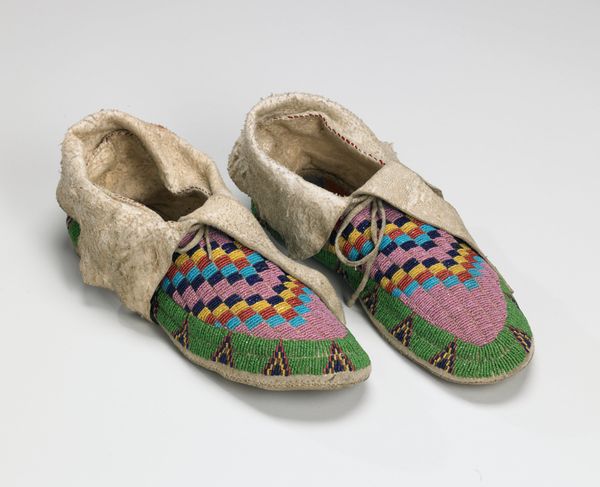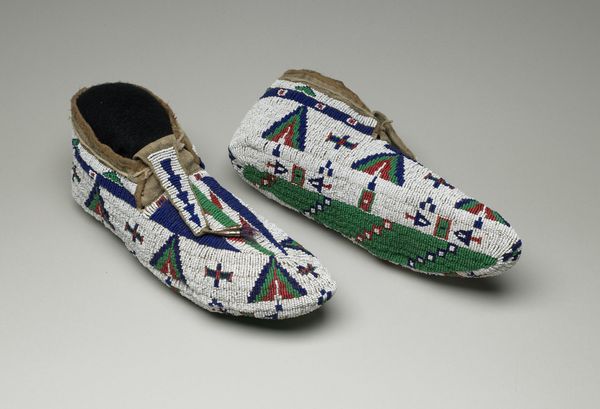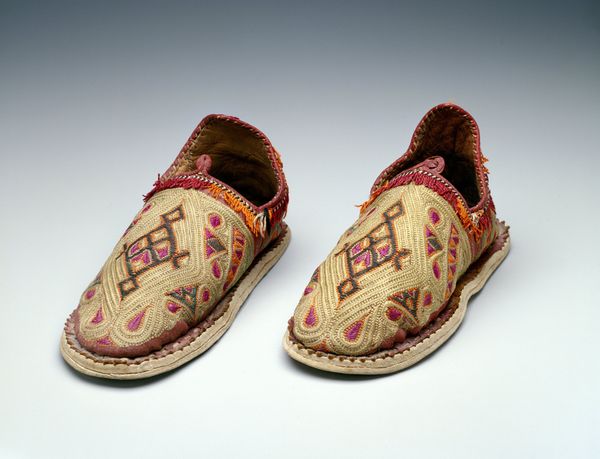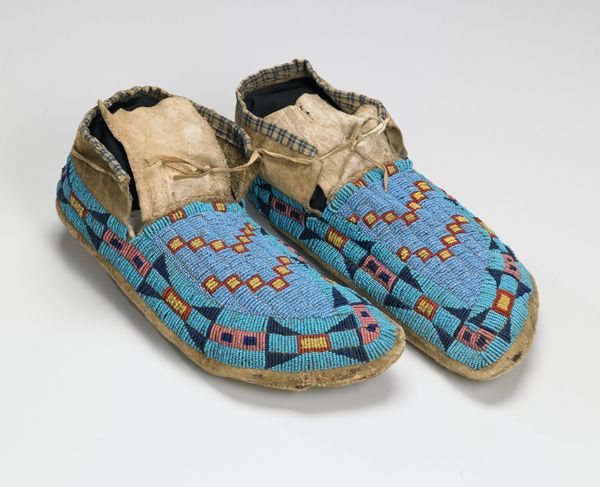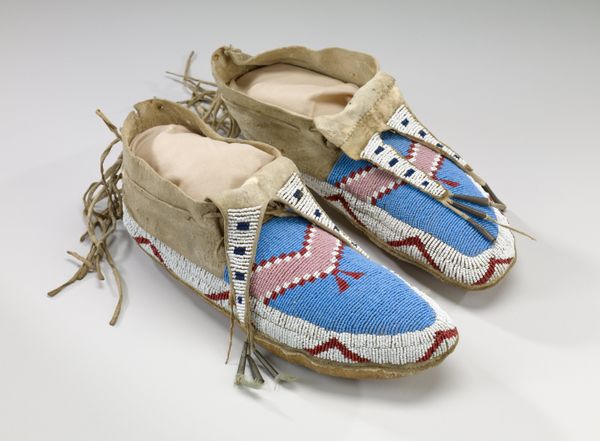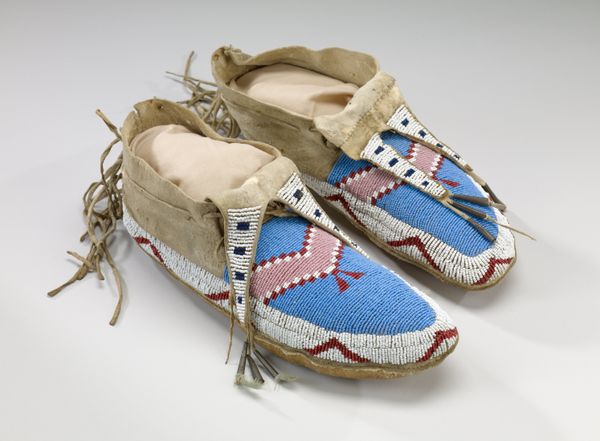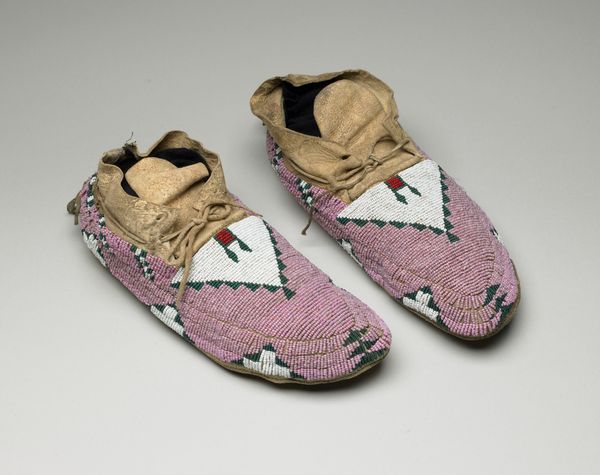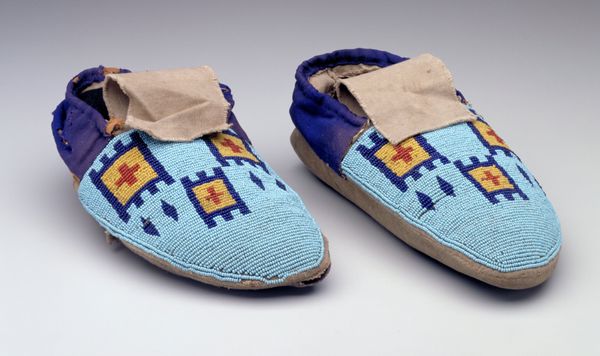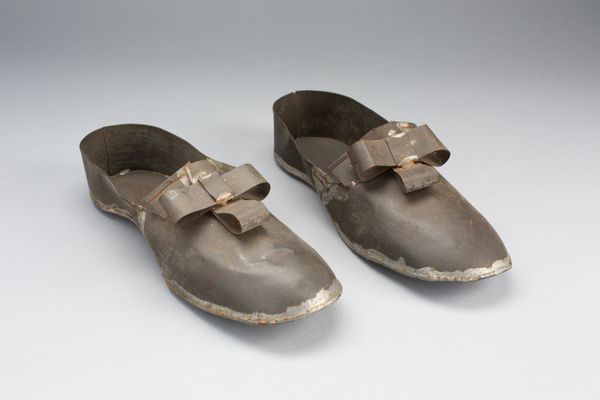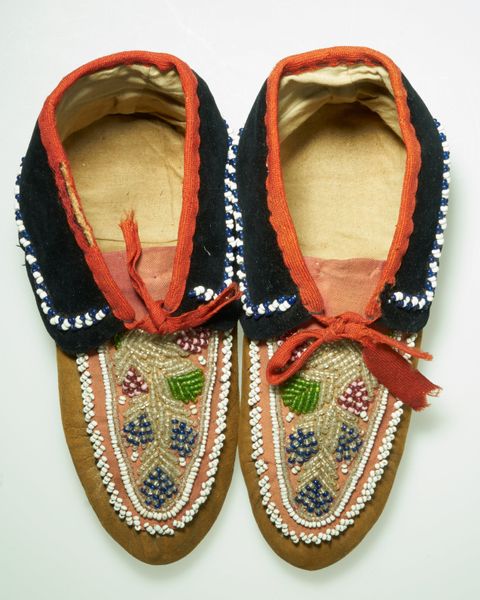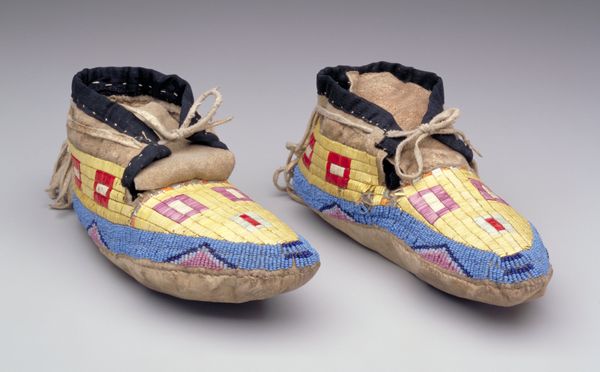
fibre-art, textile
#
fibre-art
#
textile
#
decorative-art
#
indigenous-americas
Dimensions: 10 x 3 1/2 x 3 1/2 in. (25.4 x 8.89 x 8.89 cm) (each)
Copyright: Public Domain
Curator: Today, we're examining a fascinating example of Nêhiyawak, or Cree, artistry from around 1890: a pair of moccasins held in the collection of the Minneapolis Institute of Art. Editor: My immediate impression is one of vibrant life, like verdant spring growth constrained by crisp geometric order. Curator: Precisely! Observe how the bold green field dominates the visual space, bisected by stark white lines. The texture, conveyed through what we understand to be tiny beads, gives it an almost pixelated quality. Editor: It's visually quite arresting. But those small crosses placed along the bands - they strike me as having powerful cultural implications. Perhaps these designs carry narratives, cosmological references specific to the Cree. I wonder, do they represent cardinal directions, or perhaps ancestors? Curator: Undoubtedly, the iconography deserves deep consideration, but let's not overlook the formal aspects that give those symbols their power. Notice the repetition, the balanced distribution across the surface. The symmetry reinforces a sense of equilibrium and control, achieved within a self-imposed system. Editor: Do you think the material dictates that system? Beads necessitate a particular pattern, and the limited palette reinforces simple repetition. It’s tempting to imagine the story that might be written without that restriction. Curator: I see it as the interaction, rather than restriction, between design and application: a visual language negotiated in collaboration with its very means of expression. These aren't just foot coverings; they represent the intentional encoding of information and cultural identity through constructed meaning. Editor: Absolutely, these humble shoes become potent conveyors of cultural memory. It makes you wonder about the journey they've been on and who has walked in them. Curator: It provides another layer through which to view our understanding, seeing how technique, symbol, and culture form a holistic encapsulation, and transform our reading of the very materiality. Editor: Yes, contemplating the endurance of these motifs in our shared history is captivating; thank you for your insight into both the craft and context that they are telling.
Comments
minneapolisinstituteofart about 2 years ago
⋮
The Nehiiyawak are one of the most northern Plains tribes, occupying portions of Canada. Because they were numerous and inhabited a vast territory, their spot-stitch style of beadwork and decorative patterns, influenced neighboring tribes such as the Pikuni and A'aninin.
Join the conversation
Join millions of artists and users on Artera today and experience the ultimate creative platform.
